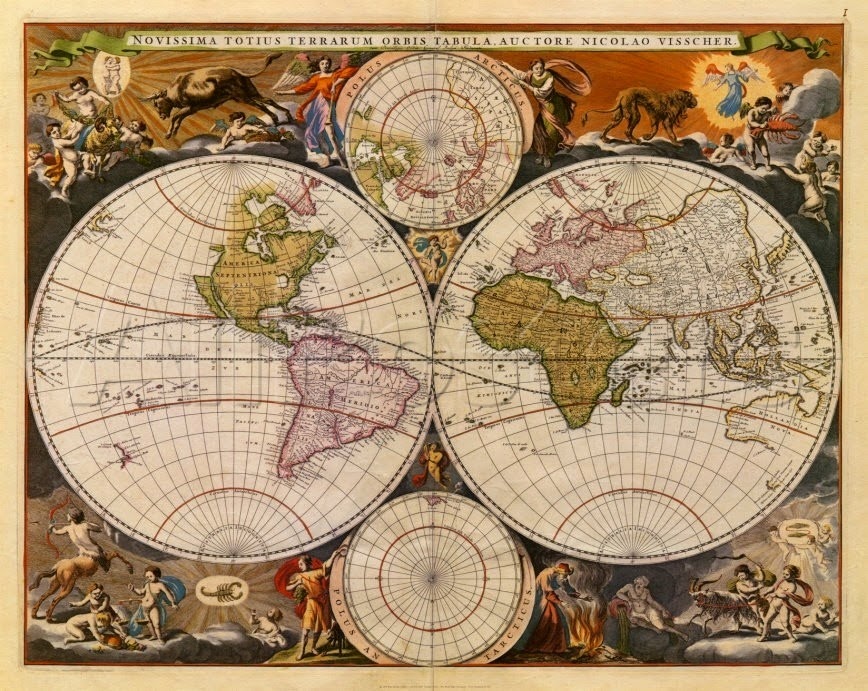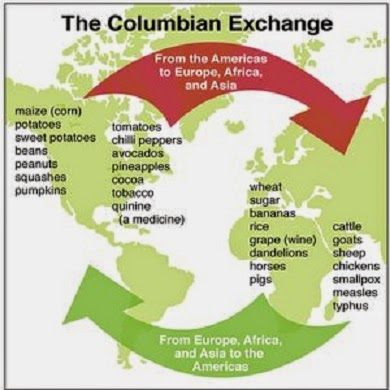By comparing the genes of current-day North and South Americans with African and European populations, an Oxford University study has found the genetic fingerprints of the slave trade and colonization that shaped migrations to the Americas hundreds of years ago.

[Credit: WikiCommons]
The study published in Nature Communications found that:
- While Spaniards provide the majority of European ancestry in continental American Hispanic/Latino populations, the most common European genetic source in African-Americans and Barbadians comes from Great Britain.
- The Basques, a distinct ethnic group spread across current-day Spain and France, provided a small but distinct genetic contribution to current-day Continental South American populations, including the Maya in Mexico.
- The Caribbean Islands of Puerto Rico and the Dominican Republic are genetically similar to each other and distinct from the other populations, probably reflecting a different migration pattern between the Caribbean and mainland America.
- Compared to South Americans, people from Caribbean countries (such as the Barbados) had a larger genetic contribution from Africa.
- The ancestors of current-day Yoruba people from West Africa (one of the largest African ethnic groups) provided the largest contribution of genes from Africa to all current-day American populations.
- The proportion of African ancestry varied across the continent, from virtually zero (in the Maya people from Mexico) to 87% in current-day Barbados.
- South Italy and Sicily also provided a significant European genetic contribution to Colombia and Puerto Rico, in line with the known history of Italian emigrants to the Americas in the late 19th and early 20th century.
- One of the African-American groups from the USA had French ancestry, in agreement with historical French immigration into the colonial Southern United States.
- The proportion of genes from European versus African sources varied greatly from individual to individual within recipient populations.
The team, which also included researchers from UCL (University College London) and the Universita' del Sacro Cuore of Rome, analysed more than 4,000 previously collected DNA samples from 64 different populations, covering multiple locations in Europe, Africa and the Americas. Since migration has generally flowed from Africa and Europe to the Americas over the last few hundred years, the team compared the 'donor' African and European populations with 'recipient' American populations to track where the ancestors of current-day North and South Americans came from.
'We found that the genetic profile of Americans is much more complex than previously thought,' said study leader Professor Cristian Capelli from the Department of Zoology.
The research team analysed DNA samples collected from people in Barbados, Columbia, the Dominican Republic, Ecuador, Mexico, Puerto Rico and African-Americans in the USA.
They used a technique called haplotype-based analysis to compare the pattern of genes in these 'recipient populations' to 'donor populations' in areas where migrants to America came from.
'We firstly grouped subsets of people in Africa and Europe who were genetically similar and used this fine scale resolution to find which combinations of these clusters resulted in the sort of mixtures that we now see in people across the Americas', said the study's first author, Dr Francesco Montinaro from the Department of Zoology.
'We can see the huge genetic impact that the slave trade had on American populations and our data match historical records', said study author Dr Garrett Hellenthal from the UCL Genetics Institute, 'The majority of African Americans have ancestry similar to the Yoruba people in West Africa, confirming that most African slaves came from this region. In areas of the Americas historically under Spanish rule, populations also have ancestry related to what is now Senegal and Gambia. Records show that around a third of the slaves sent to Spanish America in the 17th Century came from this region, and we can see the genetic evidence of this in modern Americans really clearly.'
These genetic findings also uncover previously unknown migration. ‘We found a clear genetic contribution from the Basques in modern-day Maya in Mexico’, said Professor Capelli. ‘This suggests that the Basque also took part in the colonisation of the Americas, coming over either with the Spanish conquistadores or in later waves of migration’.
'The differences in European ancestry between the Caribbean islands and mainland American population that we found were also previously unknown. It is likely that these differences reflect different patterns of migration between the Caribbean and mainland America.'
'These results show just how powerful a genetic approach can be when it comes to uncovering hidden patterns of ancestry. We hope to use the same approach to look at other populations with diverse genetic contributions, such as Brazilians,' said Professor Capelli.
Source: University of Oxford [March 24, 2015]














